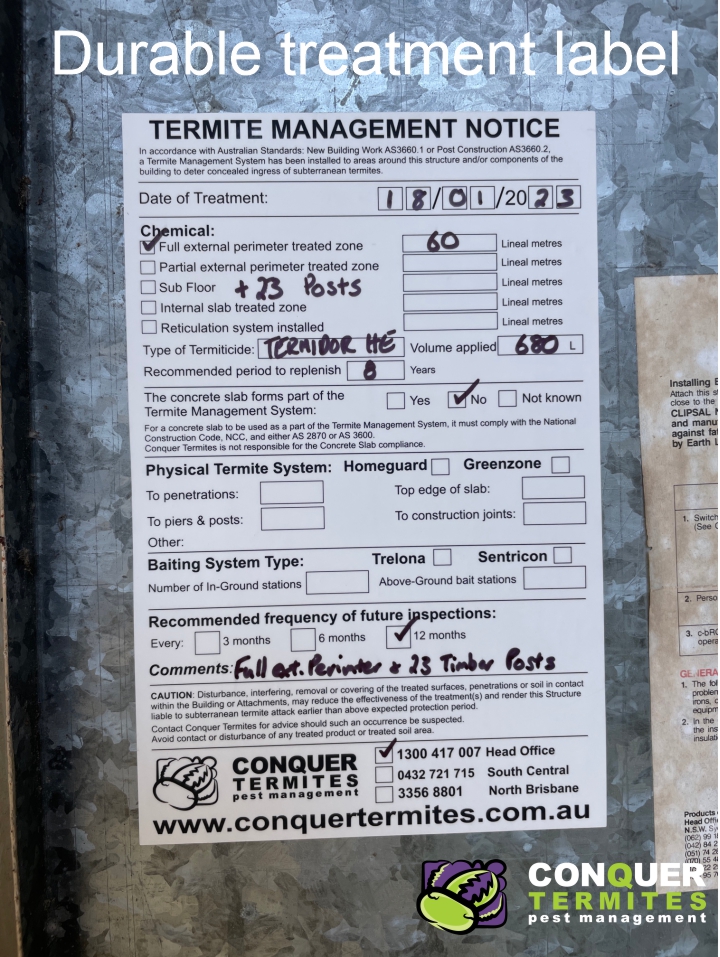What do you need to consider about termites when buying a property?
Obliviously, the big question is; does the place have live termites? Nobody wants to buy a horror story that has hidden secrets.
1. Get the place inspected
So yes, get the place fully checked by an experienced Timber Pest inspector. They will look for visual evidence of subterranean termites, fungal decay and borer.
*An expert Timber Pest Inspector is someone that solely specialises in termites and can give you a treatment proposal - not just refer you to seek quotes!
Hopefully, the outcome will say: “No visual evidence of live termites at the time of inspection”. There are three important messages in that sentence: visual, live, and time of the inspection.
Visual: Basically, the inspector doesn’t have x-ray vision and can’t see live termites or termite damage behind wall linings or built-in cabinetry.
Live: There might be evidence of termite damage, but the workings were inactive (no visual evidence of live termites). The termites might be active in another area of the house but not detectable.
Time of the inspection: So when the inspector check the house there was no visual evidence of termites, but termites might make themselves evident a month later.
2. Is there protection in place?
Of course, don’t buy a house that has live termites. But equally important, don’t buy a house that doesn’t have appropriate protection.
This is where it gets a bit confusing. You have no idea what is appropriate, you are reliant on the “Expert”.
Some, not so expert, inspectors will note there is a “Durable Lable” in the electrical meter box and claim the house has a ‘current’ termite management system. But actually, there isn’t a complete management system.

Basically, there are three types of Termite Management Systems that meet the Australian Standards and Building Code. Two of them are just the minimum requirement for certification that the Builder needs to do to release the house for occupancy. Guess what most Builders do - the minimum
1. Stop conceal termite entry
Many newer houses will have termite protection to the penetrations coming up through the concrete slab to stop concealed entry. This is the first minimum requirement for certification.
2. External visual inspection zone
The other Building Code requirement is a continuous ‘magical’ 75 mm visual inspection zone around the external perimeter (slab edge). The idea is that the homeowner will readily detect termite leads coming up out of the ground. This means you need to walk around every three months (at least) to do a visual inspection of the perimeter. Bet the builder didn’t tell you that!
3. Chemical treatment to the external perimeter
Very, very few homes are built in Queensland with a continuous 75 mm exposed slab surface. Most have been compromised by driveways and concrete paths that are built too high up against the structure.
It is just foolhardy to think the inspection zone is a good plan to stop a termite infestation. Let’s say you diligently check the external slab edge but eventually you detect a termite lead travelling up into your home. What are your options then?
You need to install a chemical treatment. Why wait and take the risk?
Conclusion and Summary Advice
So when you are purchasing a property in South East Queensland follow this checklist:
- Get a Timber Pest inspection done by an expert that can also advise you on treatment options
- Make sure you receive documentation and warranty information about the ‘Slabe Treatment’ to stop concealed termite entry
- Check if there is truly a continuous 75 mm inspection zone along the slab edge.
- If not, make sure there is a current chemical treatment in place (probably the most important consideration).




